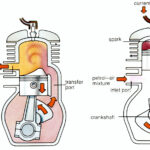Finding a quality mountain bike without breaking the bank can feel like hitting the jackpot. Imagine stumbling upon a Trek 4500 Mountain Bike for just $50 – sounds too good to be true, right? For many, especially those new to mountain biking or seeking a budget-friendly option, this scenario sparks a crucial question: Is it worth it? Let’s delve into the Trek 4500, particularly models from the early 2000s, to see if this bargain bike is a diamond in the rough or just a rusty relic.
The Trek 4500, especially models like the 2002 version, occupies an interesting space in the mountain bike world. These bikes were originally designed for cross-country (XC) riding and positioned as recreational or beginner models. This means the frame geometry is geared towards efficiency and comfort on trails, rather than aggressive downhill performance. Constructed from aluminum, the frame of a Trek 4500 is not going to be as feather-light as a high-end carbon fiber race bike, but it offers a solid and durable foundation for trail riding. Compared to department store bikes, the Trek 4500 frame is a significant step up in quality and intended use.
One of the most common questions when considering an older bike like the Trek 4500 is its upgrade potential. The good news is that these bikes are generally worth upgrading, especially if you got it for a steal like $50. Focus on upgrades that enhance performance and address wear and tear. A common starting point is the front fork. The original forks on these models were basic, so upgrading to a more modern, air-sprung fork can dramatically improve ride quality and control on trails. Tires are another impactful upgrade. Depending on your riding style, swapping out the stock tires for something more trail-oriented or faster-rolling road tires (if you do more pavement riding) can make a noticeable difference. As components wear out, like the drivetrain (gears and shifters), replacing them with newer, more efficient parts is a natural progression.
A frequently discussed upgrade for older mountain bikes is converting to disc brakes. While some Trek 4500 frames from this era, specifically the 2002 model, did not come stock with disc brake mounts, it’s often possible to add them using aftermarket adapters. These adapters bolt onto the frame, providing the necessary mounting points for disc brake calipers. However, upgrading to disc brakes involves more than just the frame mount. You would also need disc-compatible wheels, rotors, calipers, and levers, which can add up in cost. It’s worth considering if the investment in a disc brake conversion is justified compared to the overall value of the bike and your riding needs. V-brakes, which these bikes originally came with, are still perfectly functional for many types of riding.
Ultimately, a used Trek 4500 mountain bike, especially at a very low price, can be an excellent entry point into mountain biking or a solid base for a budget-friendly project bike. The frame is capable for recreational XC riding and can handle upgrades over time. Before considering major upgrades like disc brakes, assess the overall condition of the bike and your riding goals. The best first step is always to ride the bike as it is. Experience its performance on your local trails and then decide which upgrades will best enhance your riding experience. For $50, a Trek 4500 is often more than just a bargain; it’s an opportunity to get out and ride.

